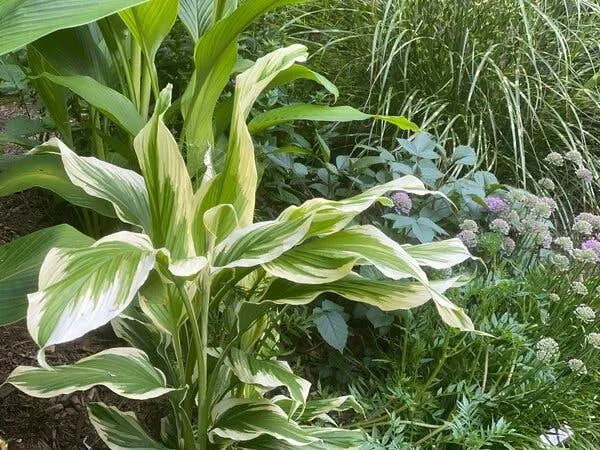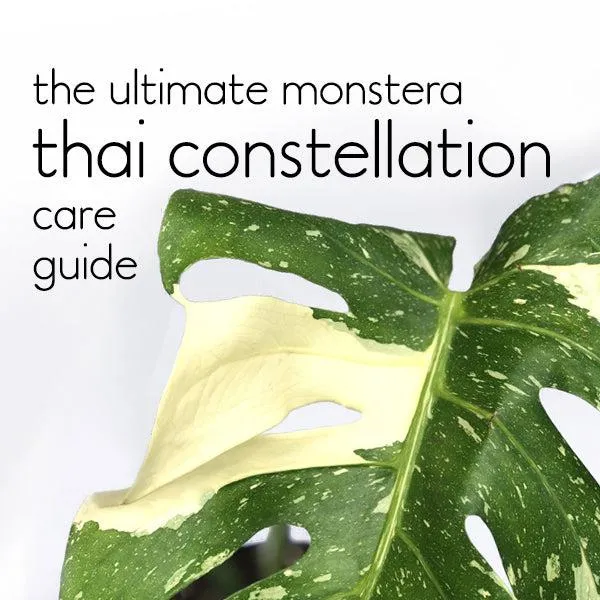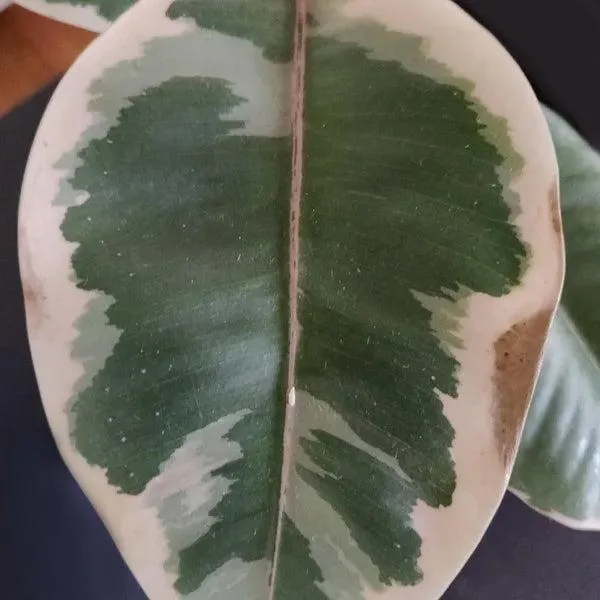How to Increase the White Variegation on Your Plants
If you have variegated plants in your garden that you’d like to see exhibit more white coloring, there are several techniques you can try to boost their variegation. Variegated plants have leaves or foliage that are streaked, splashed or mottled with different colors other than just solid green. Many popular varieties sport white or yellow variegation that gardeners aim to encourage.
Understand Variegation
Variegation occurs naturally due to genetic mutations that disrupt the plant’s chlorophyll production in certain areas. Chlorophyll is what gives foliage its green color. When sections of a leaf lack chlorophyll, they appear in contrasting hues such as white or yellow. Variegation is not caused by disease or deficiency.
The pattern and amount of variegation on a plant is genetically determined, but environmental factors can somewhat influence its expression. Certain growing conditions allow more variegation to show through rather than mask it with solid green growth.
Provide Bright Light
Perhaps the most crucial factor for increasing white variegation is light exposure. Variegated plants need lots of bright, direct sunlight to suppress green growth and bring out their white, yellow and pink flecks. From my experience, variegated plants positioned in part shade often revert more to solid green over time.
Be sure variegated specimens receive at least six hours of unfiltered sunlight daily during the spring and summer. In shadier spots, their leaves will struggle to develop much contrasting pigment and coloration. Move potted varieties to the sunniest windowsill indoors if outdoor light is limited.
Manage Water and Fertilizer
Once acclimated, variegated plants appreciate drier soil conditions between waterings compared to their solid green counterparts. Moist but not overly wet soil encourages more broken chlorophyll production and variegation. With too much moisture, white splotches may fill in with green as the plant compensates.

- Water only when the top inch of soil becomes dry.
- Avoid fertilizing as frequently. Too much nitrogen promotes vigorous green growth at the expense of variegation.
- Use diluted, all-purpose plant fertilizer once a month at half-strength.
Prune Judiciously
Selective pruning can help maintain and spread desirable variegation on plants over time. However, be careful not to cut into the crown or eliminate all growth from a section.
- Prune off primarily green shoots that appear, leaving more variegated stems.
- Trim fading or damaged foliage to encourage fresh variegated growth.
- Deadhead spent flowers before seed formation on plants like hostas.
This strategy imitates the propagation technique of taking variegated plant cuttings rather than letting all-green sections dominate. It takes patience, but pruning steers the plant towards your preferred variegation expression.
Consider Grow Lights
For potted specimens indoors during winter, supplemental lighting may make the difference in whether variegation comes through or disappears. A basic LED or fluorescent grow light positioned close to the plant for 12-16 hours daily provides the vital photons chlorophyll needs to develop and hold pattern.
In one case, my parlour palm kept vibrant white margins all winter under a grow light after losing most variegation the prior year without. The extra artificial illumination let it retain high-contrast variegation indoors.
Give Variegated Cuttings Room to Thrive
Propagating new plants from variegated cuttings ensures you maintain that particular cultivar long-term. However, cuttings need adequate sun and growing area respecting their needs. Overcrowding often triggers a reversion to all-green as plants compete.
Space cuttings at least 12-18 inches apart in organic, well-draining soil. Once established, treat them similarly to parent plants regarding light, water and fertilizer. This allows cuttings strongest variegation genes room to fully express without risk of fading out.

Consider Environment
Microclimates that are a bit warmer and drier could potentially promote increased variegation expression on susceptible plants. This includes hot, sunny border locations protected from harsh winds and rain splashes that might damage new growth.
However, be mindful of each variety’s specific temperature and moisture requirements too. Some may struggle in very hot spots and prefer dappled light. Experiment with different garden placements to find their happiest homes showcasing optimal variegation.
Accept Natural Variation
No matter the growing conditions or techniques, 100% control over variegation levels may be elusive. These plants exhibit natural genetic variability. Some shoots may lean more green while others display dramatic white patterning.
Rather than frustration, see this diversity as part of their charm. Over successive seasons, favor growth of branches conforming closer to your preferences through selective pruning and propagation. But also appreciate their inherent complexity!
In Summary…
By optimizing light, water, fertilizer needs and microclimate according to each variegated plant’s requirements, their brilliant white, pink or yellow splashes usually become more prominent. Regular maintenance like pruning and new cuttings also maintain desirable variegation characteristics over the long-run. Most importantly, be patient – these patterns take time to fully emerge!
With the right growing conditions and TLC, variegated beauties can basically reach their max white potential. Let me know if you have any other questions!

Tips for Making Variegated Plants Whiter
| Tip | Details |
|---|---|
| Increase Light Exposure | Variegated plants need more light to promote chlorophyll production in white/yellow sections. Move plants to a south or west facing window. |
| Rotate Plants Regularly | Turning plants weekly helps expose all sections to optimal light levels and encourages an even color pattern. |
| Prune Back Occasionally | Removing some green growth inside the plant trains it to push new, lighter variegated leaves on the outer edges visible. |
| Move to Full Sun Outdoors in Summer | When temperatures allow, relocate plants outdoors to maximize light intake and whitening for the growing season. |
| Increase Fertilizer in Spring & Summer | More nutrients promote leaf growth and whiter variegation with adequate sun exposure. |
FAQ
-
What is the best time of year to get more white variegation?
Spring and summer are typically when variegated plants will show more white in their leaves. Variegated plants produce more chlorophyll (the green pigment) in their leaves during fall and winter to help them survive, so the white patches may be less noticeable at that time. However, the amount of white can vary between different plant varieties as well.
-
How can I get new growth to come in more white?
Putting variegated plants in a spot with more light will help encourage more white. Direct sun or very bright, indirect light basically makes the plant produce less chlorophyll and chlorophyll is what masks the white. At the same time, too much sun can scorch the leaves. Another method is to fertilize sparingly in the growing season. Strong fertilizers cause plants to produce more green growth.
-
Will cutting back a variegated plant encourage more white growth?
Pruning back variegated plants after flowering can sometimes result in whiter new growth coming in. When you cut the plant back, it has to regenerate using its stored resources instead of devoting energy to making lots of green leaves. So the regrowth may have increased variegation. Nevertheless, it depends on the specific plant variety. Cutting back is no guarantee of whiter foliage.
-
What should I do if new growth is coming in mostly green?
If a variegated plant is producing primarily green leaves rather than the pretty white and green pattern you want, it could be getting inadequate light. Moving it to a sunnier spot may do the trick. You may also try pinching or cutting off the all-green new growth stems. The plant will try to regrow those areas, hopefully with more attractive variegation this time. On the other hand, it’s possible the plant’s variegation is becoming unstable and it will mostly show green regardless of conditions.
-
Any other tips for getting more white variegation?
Basically, you want to challenge the plant a bit by limiting fertilizer, providing plenty of sun yet protect from intense heat, and pruning judiciously when needed. Proper care helps the plant put its energy into developing markings. You could also check if the specific cultivar you have is known for stable or high variegation. Getting a plant with a reputation for showing lots of white is sort of like getting a head start. But in general, bright light and restraint in feeding are your best tools for coaxing out that stunning variegation!
-
Will variegation get less stable over time?
It’s quite possible for variegation to fade or become less prominent on some plants as the years pass. Variegated mutations can be unstable and tend to revert back to solid green over successive generations. Amazingly, this is nature’s way of selection for traits that aid survival. Yet many long-lived variegated plants show good variegation retention. It depends on the variety. With proper care, variegation may stay vibrant throughout the life of the plant. But there are no guarantees, so enjoy it while it lasts!

